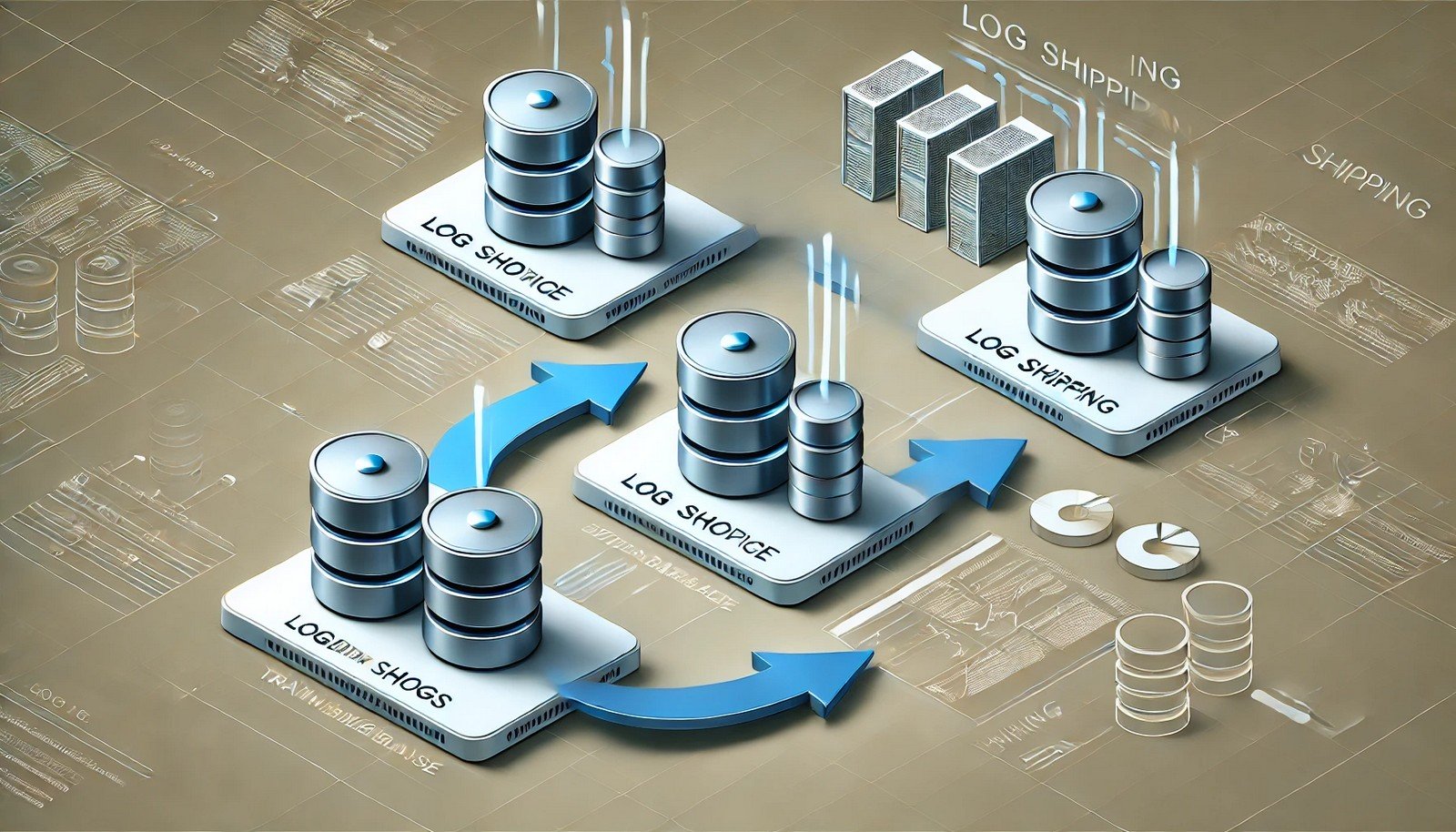Log Shipping
 (Representational Image | Source: Dall-E)
(Representational Image | Source: Dall-E)
Quick Navigation:
- Log Shipping Definition
- Log Shipping Explained Easy
- Log Shipping Origin
- Log Shipping Etymology
- Log Shipping Usage Trends
- Log Shipping Usage
- Log Shipping Examples in Context
- Log Shipping FAQ
- Log Shipping Related Words
Log Shipping Definition
Log Shipping is a disaster recovery and high-availability strategy in database management where transaction log backups from a primary database are automatically sent and applied to one or more secondary databases. This process ensures minimal data loss and supports quick failover in case of failure. Log Shipping is widely used in SQL Server environments, where it allows database administrators to maintain synchronized copies of data across servers with scheduled log transfers.
Log Shipping Explained Easy
Think of Log Shipping like a school notebook. Imagine you’re writing your homework in one notebook (the primary database), but every 5 minutes, you copy everything into another notebook (the secondary database). If you lose the first notebook, you still have a backup with almost everything written down! Log Shipping works in the same way by continuously sending updates from one database to another so that if something goes wrong, there’s always a copy ready to use.
Log Shipping Origin
The concept of Log Shipping evolved from traditional database replication techniques, gaining popularity as enterprises sought efficient backup and disaster recovery solutions. It became a formalized feature in SQL Server 2000, enabling organizations to maintain synchronized databases across geographically distributed systems.
Log Shipping Etymology
The term "Log Shipping" originates from the words "Log," referring to transaction logs that record database changes, and "Shipping," which represents the automated process of transferring these logs to another location.
Log Shipping Usage Trends
Log Shipping has remained relevant in database management, especially in Microsoft SQL Server environments. While newer high-availability solutions like Always On Availability Groups and cloud-based replication have gained traction, Log Shipping is still favored for its simplicity, cost-effectiveness, and reliability in scenarios where real-time failover is not required but near-real-time recovery is essential.
Log Shipping Usage
- Formal/Technical Tagging:
- Database Management
- Disaster Recovery
- SQL Server - Typical Collocations:
- "SQL Server Log Shipping"
- "transaction log backup shipping"
- "Log Shipping configuration"
- "Log Shipping failover strategy"
Log Shipping Examples in Context
- A company uses Log Shipping to maintain a standby database in another city, ensuring business continuity in case of data center failure.
- Database administrators configure Log Shipping to create a near-real-time replica of a production database for reporting purposes.
- A financial institution implements Log Shipping to ensure customer transactions are consistently backed up and available in a secondary location.
Log Shipping FAQ
- What is Log Shipping in SQL Server?
Log Shipping is a process of automatically backing up transaction logs from a primary database and restoring them on a secondary database at scheduled intervals. - How does Log Shipping help in disaster recovery?
It ensures that a secondary database stays updated with minimal data loss, allowing a quick switch in case the primary database fails. - What are the main components of Log Shipping?
The primary database, secondary database(s), transaction log backups, and the Log Shipping agent that handles backup, copy, and restore jobs. - Does Log Shipping support automatic failover?
No, Log Shipping requires manual intervention to failover to the secondary database. - Can Log Shipping work with different SQL Server versions?
Log Shipping works best when both primary and secondary servers run the same SQL Server version, but some version mismatches are supported. - What is the difference between Log Shipping and Database Mirroring?
Log Shipping is asynchronous and requires manual failover, whereas Database Mirroring offers synchronous data replication and can support automatic failover. - How frequently can transaction logs be shipped?
Log backups can be sent as frequently as every minute, depending on the configured schedule. - Can Log Shipping be used for read-only reporting?
Yes, a secondary database in Standby mode allows read-only access for reporting purposes. - What are the system requirements for Log Shipping?
Both primary and secondary servers must have SQL Server installed and configured with the same database structure. - What happens if a transaction log backup is lost?
If a log backup is missing, Log Shipping cannot continue until a full database backup is restored on the secondary server.
Log Shipping Related Words
- Categories/Topics:
- SQL Server
- Database Administration
- Data Backup & Recovery
Did you know?
Log Shipping can be used to offload read-intensive operations from the primary database. By using a secondary database in Standby mode, businesses can reduce the load on the main production server while still allowing users to query near-real-time data.
PicDictionary.com is an online dictionary in pictures. If you have questions or suggestions, please reach out to us on WhatsApp or Twitter.Authors | Arjun Vishnu | @ArjunAndVishnu

I am Vishnu. I like AI, Linux, Single Board Computers, and Cloud Computing. I create the web & video content, and I also write for popular websites.
My younger brother, Arjun handles image & video editing. Together, we run a YouTube Channel that's focused on reviewing gadgets and explaining technology.



Comments powered by CComment